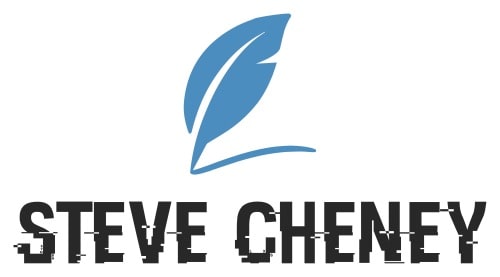Transforming retirement plan education into an engaging experience is essential for enhancing employee participation and understanding. By incorporating interactive elements such as workshops, gamified learning modules, and real-life scenarios, organizations can make complex concepts more relatable and accessible. Utilizing technology like webinars and mobile apps further enhances engagement, allowing employees to learn at their own pace. Fostering a supportive environment encourages questions and discussions, empowering individuals to take ownership of their retirement planning. Ultimately, this approach helps build confidence and equips employees with the knowledge they need to secure their financial futures effectively.
Why Engaging Retirement Education Matters?
Retirement plans are often perceived as a minefield of intricate details and financial jargon, which can overwhelm many employees. The lack of clear and engaging education around these plans means individuals are frequently left unprepared as they transition into retirement. An engaging educational initiative can dramatically shift this reality. By presenting retirement planning expertise that captures attention and encourages participation, organizations can empower their workforce to securely plan for the future, actively involving employees in a dialogue that directly influences their financial well-being.
Beyond merely providing information, engaging in retirement education is a powerful empowerment tool. It has a ripple effect when employees are informed, enthusiastic, and confident about their retirement plans. Employee retention improves, job satisfaction increases, and workplace morale is markedly boosted. Employees who feel secure about their financial futures can focus more on their current roles, contributing more significantly to the organization’s success.
Interactive Tools: Making Complex Concepts Simple
Simplifying complicated retirement concepts is pivotal, and interactive tools are essential. Engaging methods like quizzes and financial calculators help employees visualize the future impact of their current financial behaviors. According to insights from a Forbes article, these methods help demystify the saving process, allowing users to understand and manage their financial pathways. Real-time feedback provided by these tools not only aids in setting realistic retirement objectives but also helps continuously guide individuals toward these goals by highlighting the immediate results of their financial decisions.
Benefits of Technology Integration
- Offers personalized learning experiences customized to individual financial situations
- Ensures educational content remains engaging through timely updates and dynamic formats
- Enhances accessibility for remote or decentralized workforces, ensuring universal participation in financial planning education
By integrating such technology, retirement education moves from a static information session to a dynamic and interactive experience that is far more likely to engage and retain employee interest and participation.
Storytelling: A Memorable Approach
Stories have a timeless ability to engage and inspire, and when used in educational contexts, they significantly boost memory retention. Incorporating storytelling into retirement education humanizes complex financial concepts. By utilizing real-life case studies and personal anecdotes, employees can relate more profoundly to retirement strategies and ideas that might otherwise seem abstract and intangible. This storytelling approach transforms mere data into impactful narratives, allowing employees to envision their financial futures more clearly and fostering a deep understanding of potential outcomes.
Webinars and Online Workshops
Webinars and online workshops are invaluable for reshaping the traditional retirement education landscape. These platforms offer direct access to experts, allowing employees to ask questions in real-time and engage in discussions that deepen their understanding. This immediacy of interaction makes the subject matter more engaging and helps clarify complex topics through real-time dialogue and participation. As these sessions can be recorded and revisited, they serve as an ongoing resource, enabling employees to reinforce their understanding at their own pace.
Gamification: A Fun Twist to Learning
Gamification breathes new life into the learning process. By incorporating elements of games—such as challenges, rewards, and levels—educational programs convert learning into an enjoyable experience. This approach activates a competitive spirit, enhancing participation and commitment to learning. The research highlighted in a New America study underscores how such tactics—rooted in recognition and reward—substantially boost morale and participation rates. Gamification makes learning about retirement enjoyable and rewarding, ensuring employees participate and genuinely invest in their financial education journey.
Peer-to-Peer Learning
Effective education thrives on shared experiences, and peer-to-peer learning embodies this philosophy. Encouraging employees to exchange personal insights and strategies fosters a rich learning environment that complements formal education. The nuances of firsthand experiences often provide practical, actionable advice that formal training materials might not convey. This exchange builds a sense of community, enhances trust, and strengthens the collective learning culture within an organization, creating a support network that empowers employees with practical knowledge and shared insights into financial planning.
Feedback Loops: Improving Content Over Time
Continuous improvement of educational content hinges on feedback. Engaging employees in feedback loops—from surveys to direct feedback sessions—allows organizations to tailor content to meet employee needs and expectations better. These insights inform timely adjustments, ensuring that educational materials evolve to remain pertinent and impactful. Maintaining an open feedback loop enriches the academic program and engages employees more deeply as they see their suggestions and needs reflected in the evolving course content.
Tracking Progress and Celebrating Achievements
The educational journey is as much about the milestones as the end goals. Setting and tracking progress helps employees perceive their growth trajectory, instilling a sense of achievement. Celebrating milestones acknowledges progress and motivates continued engagement and commitment to financial literacy. Recognizing these achievements fosters a culture of continuous improvement and dedication to learning, reinforcing the value of education in personal and professional growth.
The Transformative Power of Creative Engagement
Ultimately, transforming retirement plan education is about reimagining how employees perceive and interact with their financial well-being. Education evolves into a supportive, engaging, and transformative journey through dynamic tools, storytelling, participative learning, and a culture of continuous feedback. This comprehensive approach not only equips employees with the knowledge they need but also empowers them to take confident control of their retirement plans, ensuring a future that is as secure as it is bright.








